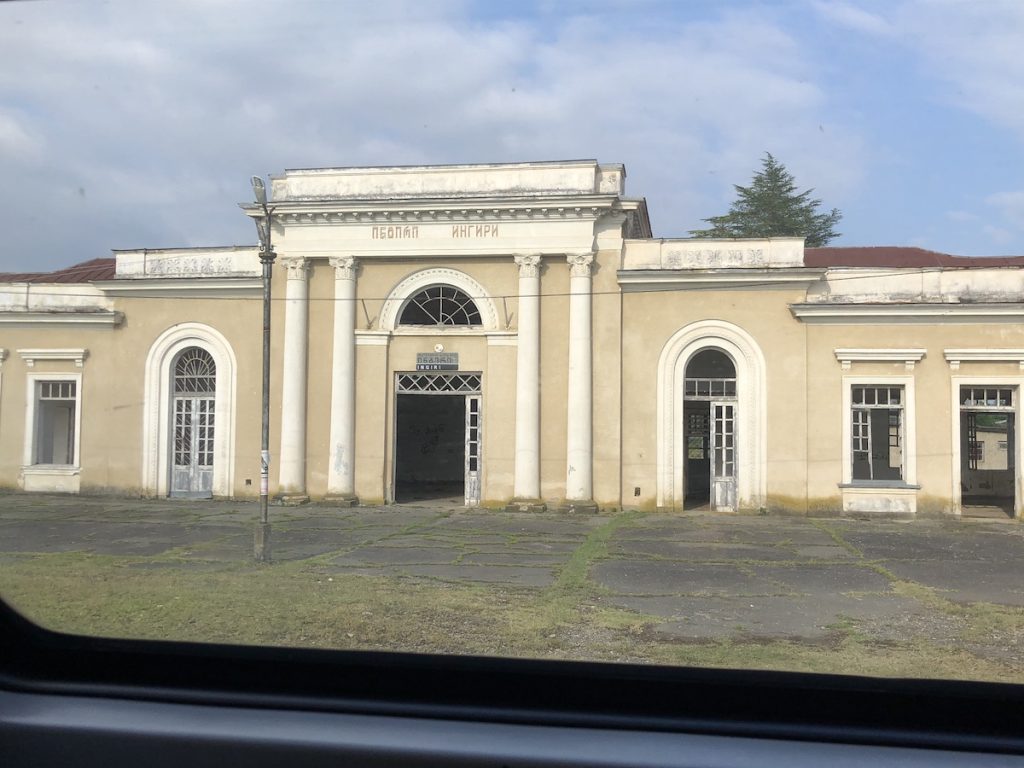
It was time to leave Svaneti’s mountains and towers and descend to the lowlands.
We caught a marshrutka at 8am for the long and winding drive to Zugdidi, capital of Georgia’s Samegrelo region. I expected it to be as dizzying as the drive up, but a little worse for being crammed in with so many other passengers.
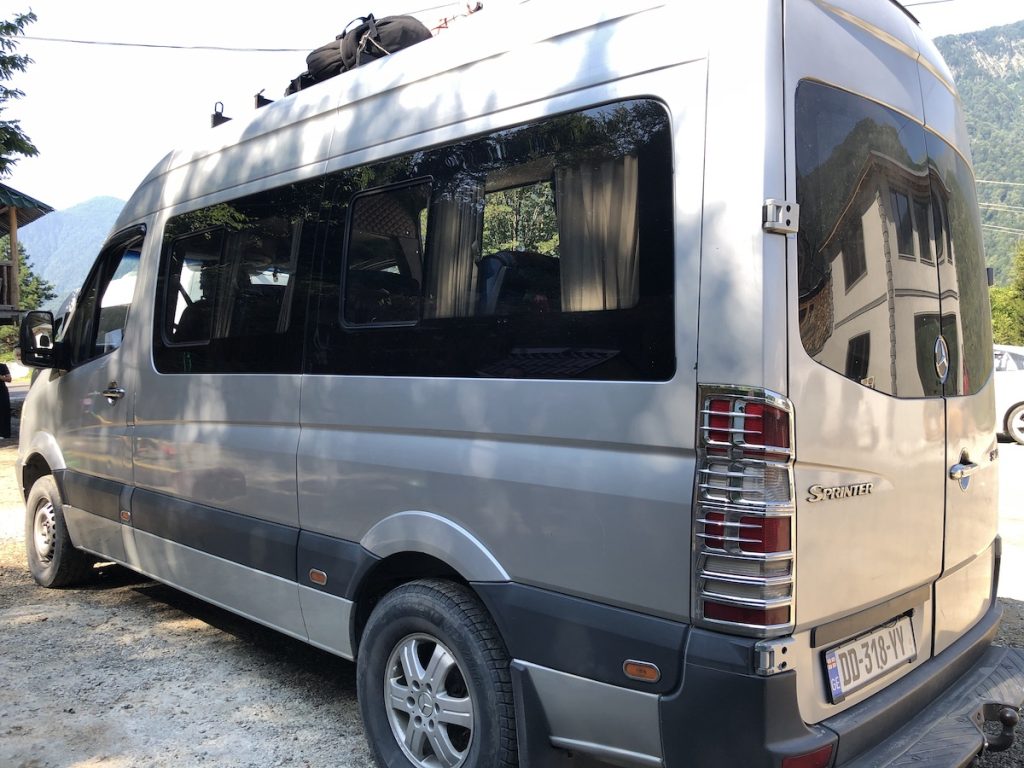
To my surprise, four hours passed very quickly. The rest of the day did not.
Our train to Tbilisi wasn’t due to leave until late afternoon. The old Soviet station was the shell of a building, with a ticket window and several rooms strewn with scaffolding and old tins of paint.
We trudged to the bridge in smothering heat, past a long strip of automotive and furniture shops with goods covered in plastic sheeting against the dust of the road. I wanted a cup of coffee, but by the time we reached the main street my shirt was sodden with sweat, and nothing was less appealing than a hot drink.
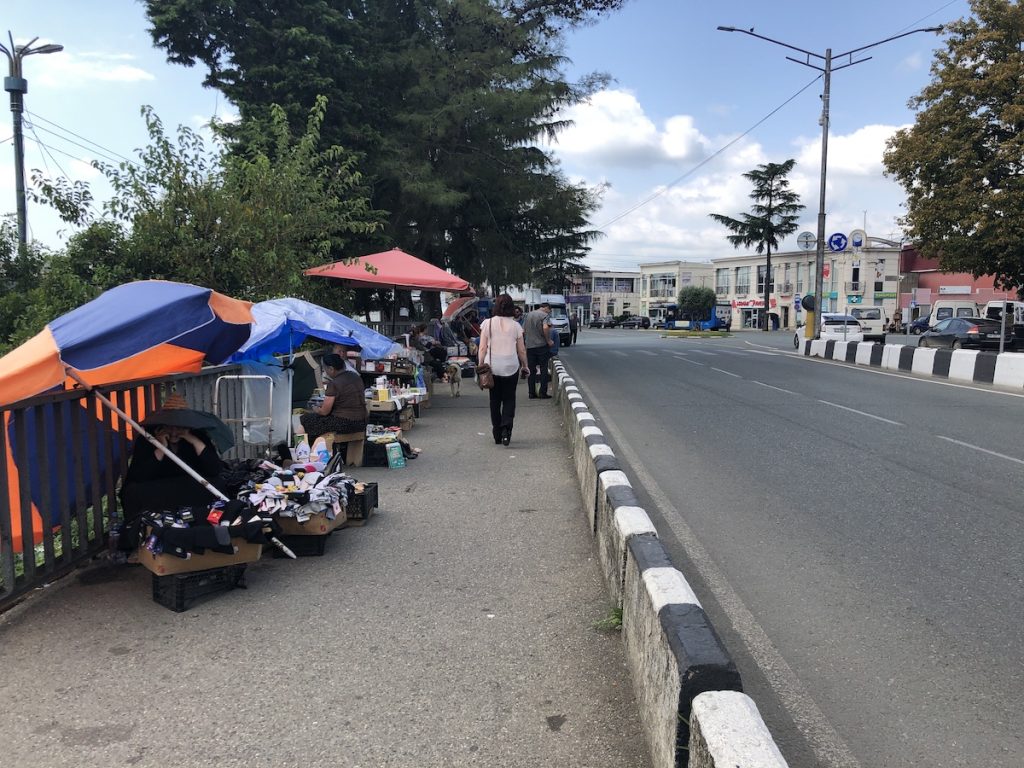
I settled for a glass of draft beer and a plate of khinkali at a dark restaurant favoured by workmen. These dumplings — some stuffed with meat and some with cheese — should be picked up by the doughy topknot, turned and bitten to slurp out the juice, and then eaten as far as the upper part, so that only a pile of topknots remain.
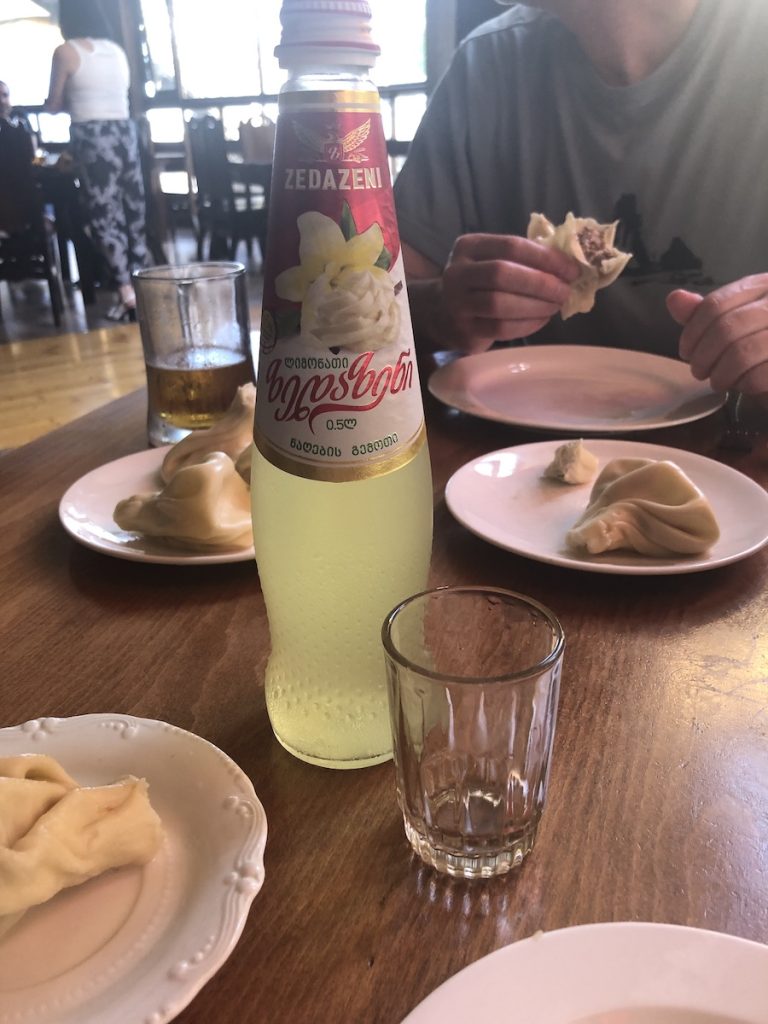
We killed as much time as we could before trudging through the heat again, past buildings decorated with Soviet-era reliefs, to a busy cafe that appeared air conditioned. But there is a limit to how slowly coffee can be sipped. In the end, we dragged our heels back to the shell of a train station to sit on a bench in a sliver of shade.
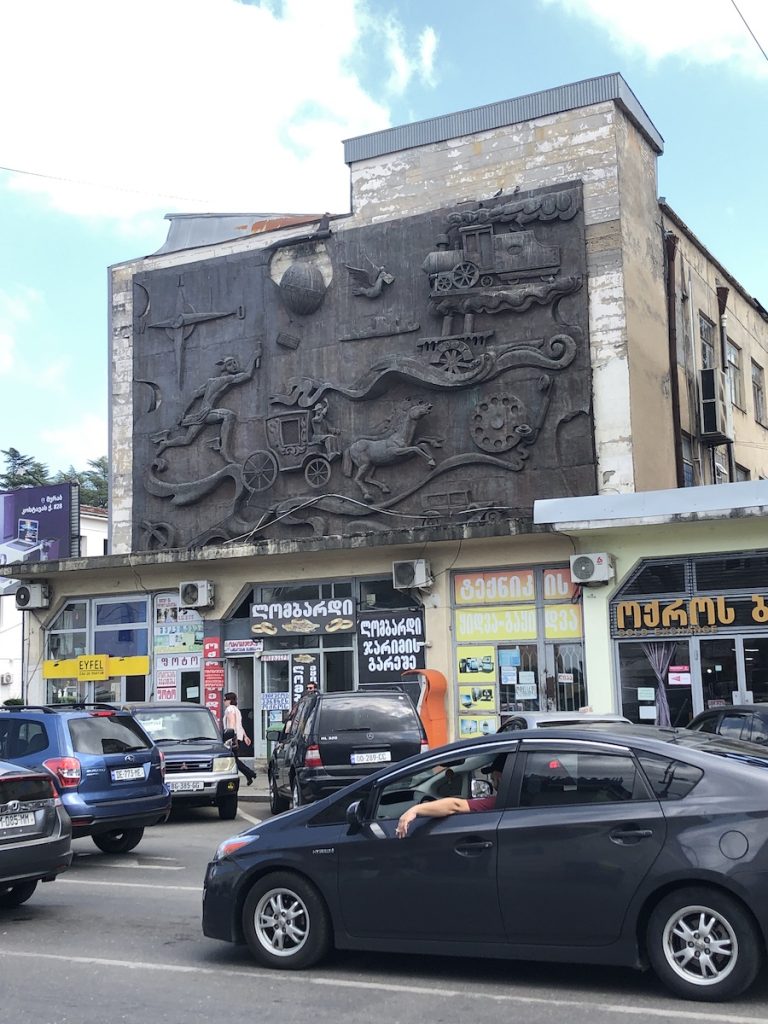
I’d bought remarkably cheap ‘business class’ tickets for the Soviet-style train, which in Georgia is a step above first class and involves seats with a little more legroom in a separate section of the carriage.
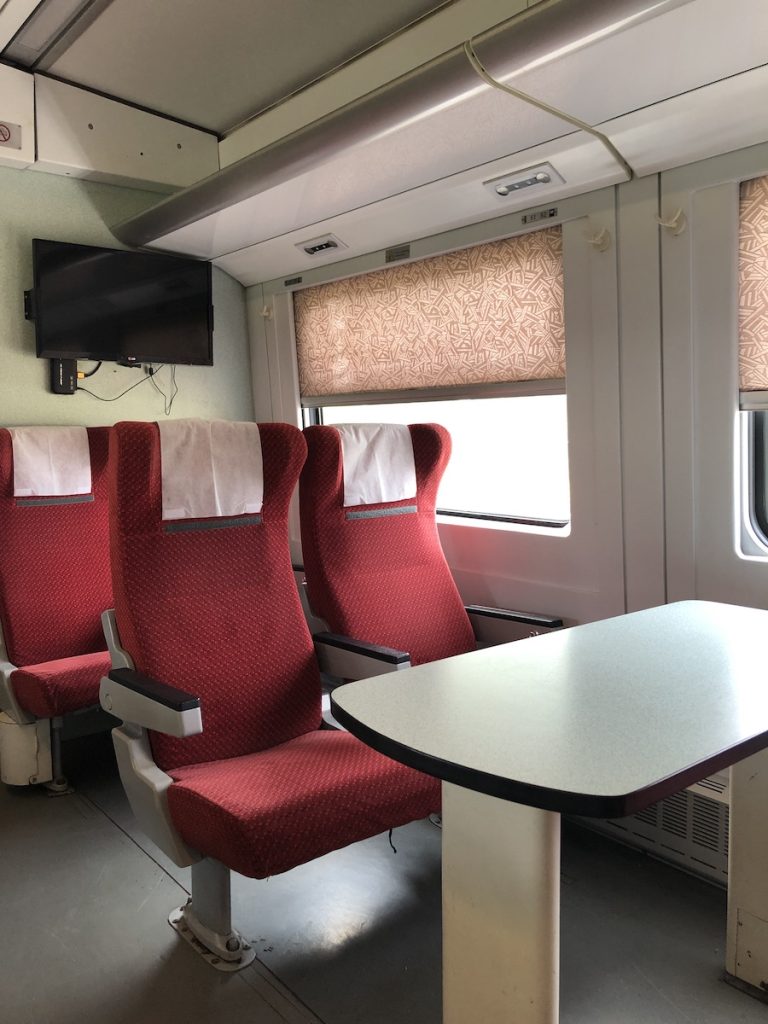
I’d hoped to read back issues of the London Review of Books in peace, but an Indian guy in the seat across from me yakked into his phone for the entire five and a half hour journey — often on speaker — as he ran some sort of tech support help desk in between blaring YouTube videos.
It is one of my many failings in life that I’m sensitive to noise — my wife would say ‘overly sensitive’ — especially while reading. Earplugs were powerless against this indefatigable chatterbox, and so I passed the time in a remarkably foul mood, glaring across the aisle and fantasizing about beating my tormentor to a bloody pulp.
It was nearly midnight by the time we reached Tbilisi, where we’d booked a quiet Air BnB flat off a sunny courtyard. A power cut killed the air conditioner soon after our arrival, but I was too tired to care.
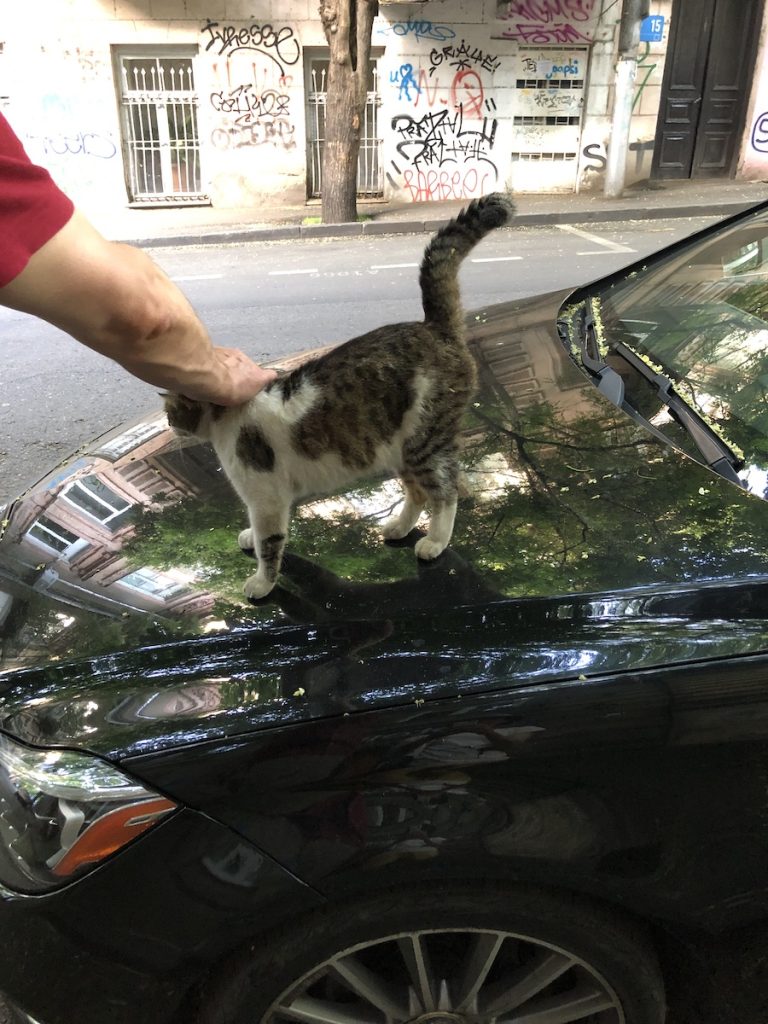
My first Tbilisi day dawned with ice cream. I like hunting down strange flavours that incorporate elements of national cuisines, and as luck would have it, Cone Culture was just a few blocks away.
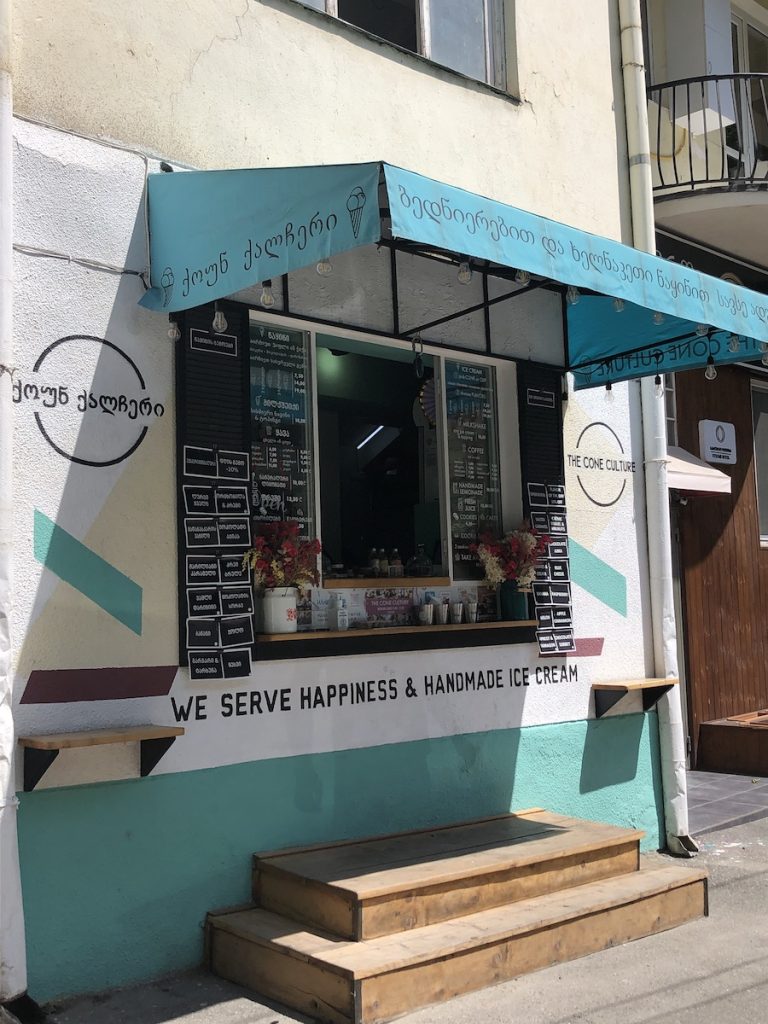
A scoop there doesn’t come cheap — it’s on a par with pricier Berlin establishments — but I was able to kick start my wandering with chocolate laced with adjika, a fiery paste used in dishes from the Samgrelo region and Abkhazia.
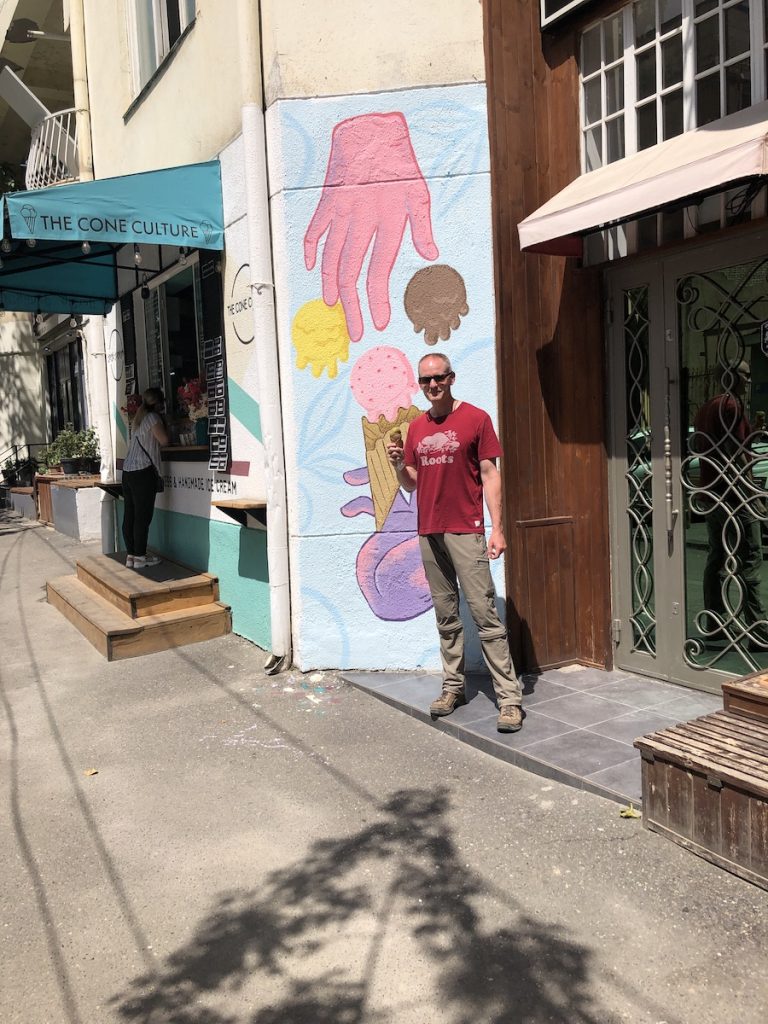
This cold burn was the boost I needed to trudge through the heat to 8,000 Vintages for a meeting with a sommelier. I’d enjoyed carafes of homemade wine every day in Svaneti, but I wanted a systematic introduction to what may be the world’s oldest wine region, home to more than 500 indigenous grape varieties.
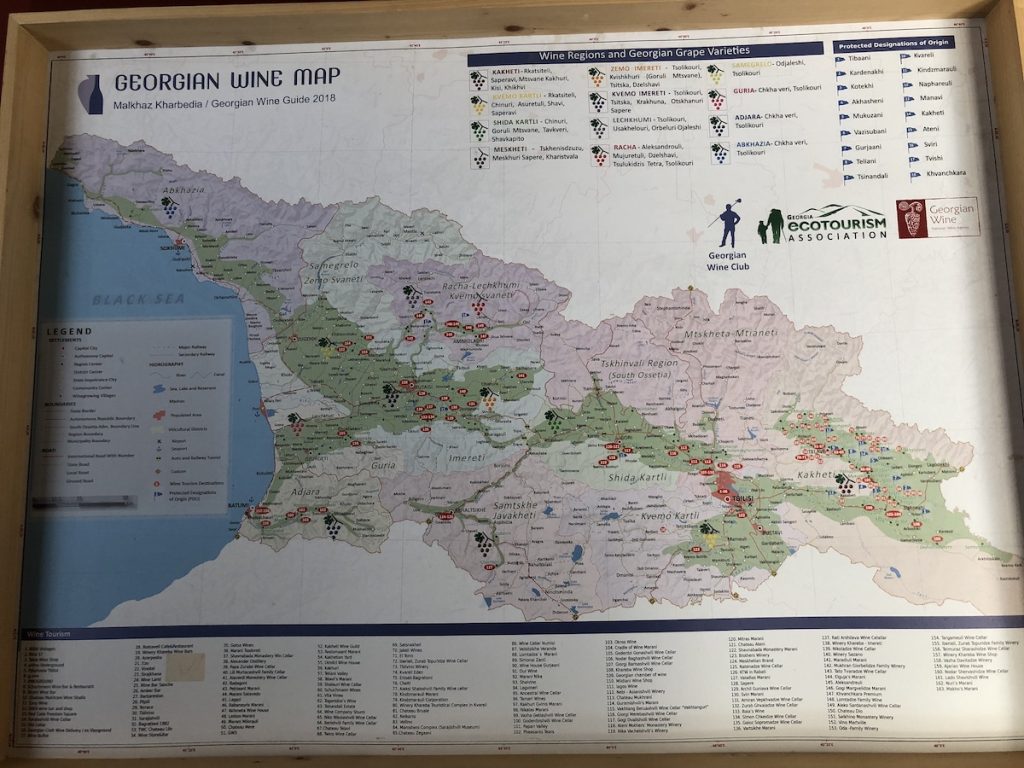
Most interesting was the amber wine, something I’ve only seen in Georgia, where wine is left to ferment together with the skins, seeds and stems for months, producing a somewhat tannic wine with flavours I’d describe as nutty or dried fruit, with a slightly rustic edge that grew more enjoyable the deeper I delved into this interesting style.
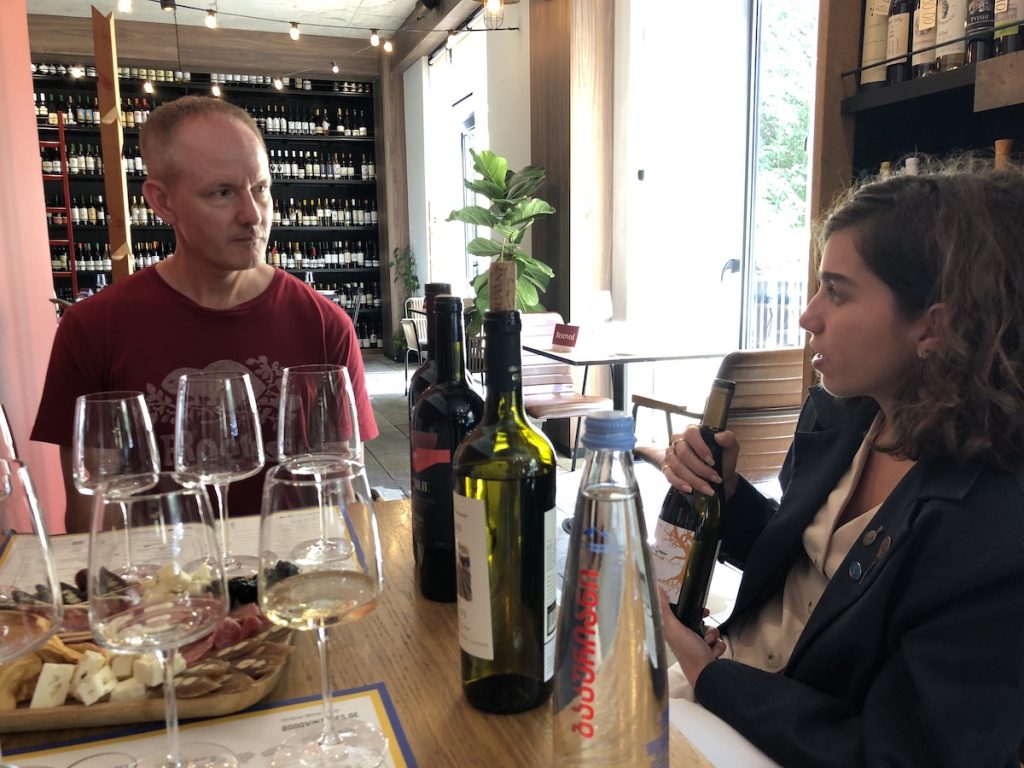
I was careful to consume an even number of glasses on the understanding that you can’t fly on one wing. I would need that balance if I was to make it to the National Museum and the works of Niko Pirosmani.
Known today as a primitivist painter, the self-taught Pirosmani’s subjects were everyday people living everyday lives: merchants, shopkeepers, nobles and regular working stiffs. He was terribly poor throughout his life, and so he also painted signboards for Tbilisi shops, some of which survived the ravages of time.
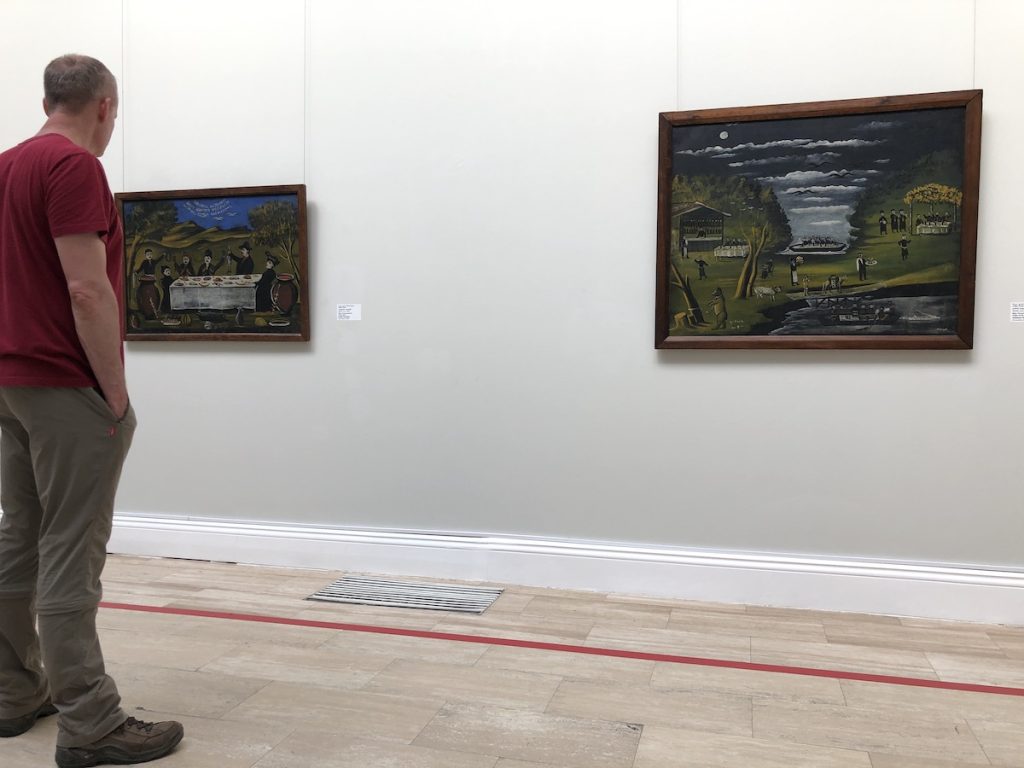
Pirosmani’s portrait was featured on Georgia’s 1 lari banknote in 2002, and his paintings are exhibited around the world. If you’re in Copenhagen, you can see several important works right now in a solo exhibition at Louisiana.
None of this posthumous praise helped Pirosmani during his lifetime, as is too often the case when it comes to art and writing. He died of malnutrition and liver failure, utterly destitute, his talents unrecognized.
It’s rather poor form to talk about food after mentioning an artist who died because he didn’t have enough of it. But food is the most frequent question I receive from those patient readers who skim past the hiking parts of my blogs to get to the eating.
If you really must know, we went to Mapshalia for supper. This busy basement diner serves Mingrelian cuisine, including the best kharcho I had on this trip.
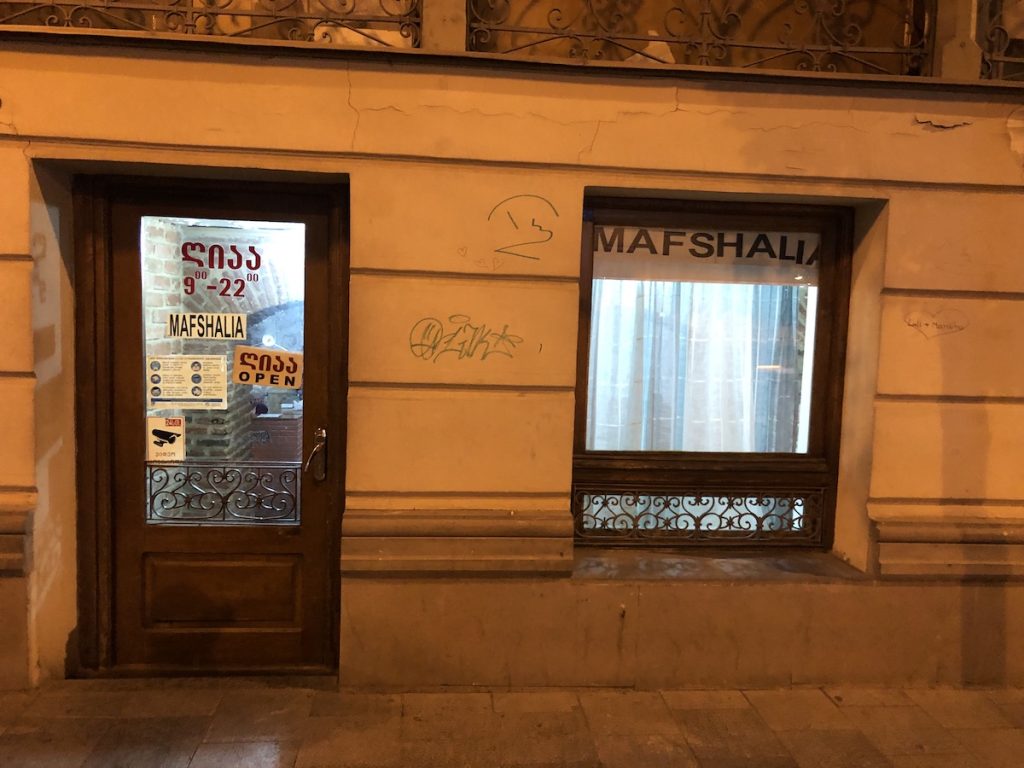
A meaty soup with an intriguing sour element thanks to plum puree, kharcho is thickened with ground walnuts and liberally spiced with adjika. It goes very well with a plate of pickles, including jonjoli, the pickled sprouts of the Caucasian bladdernut, which have a nutty, bitter flavour.
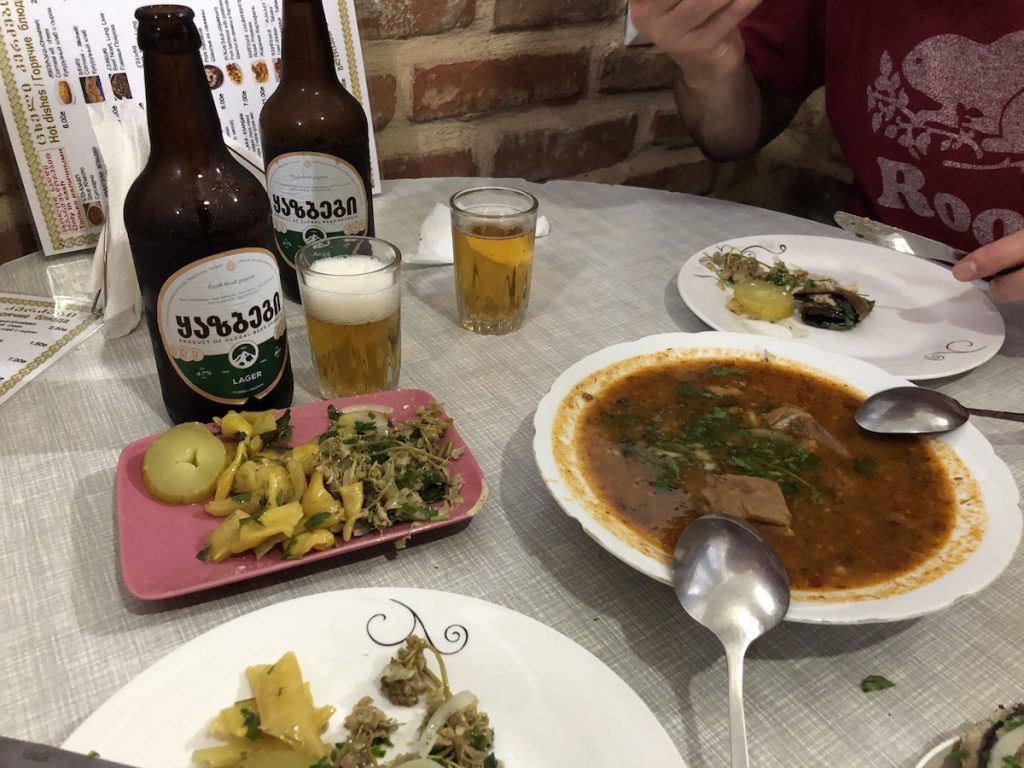
But the Adjarian khachapuri was really too much, at least as far as my cholesterol level is concerned. Unlike the khachapuri we ate in Svaneti, the Adjarian variant is a boat-shaped slab of bread fresh from the oven, topped with melted cheese, a raw egg yolk and a slab of melting butter.
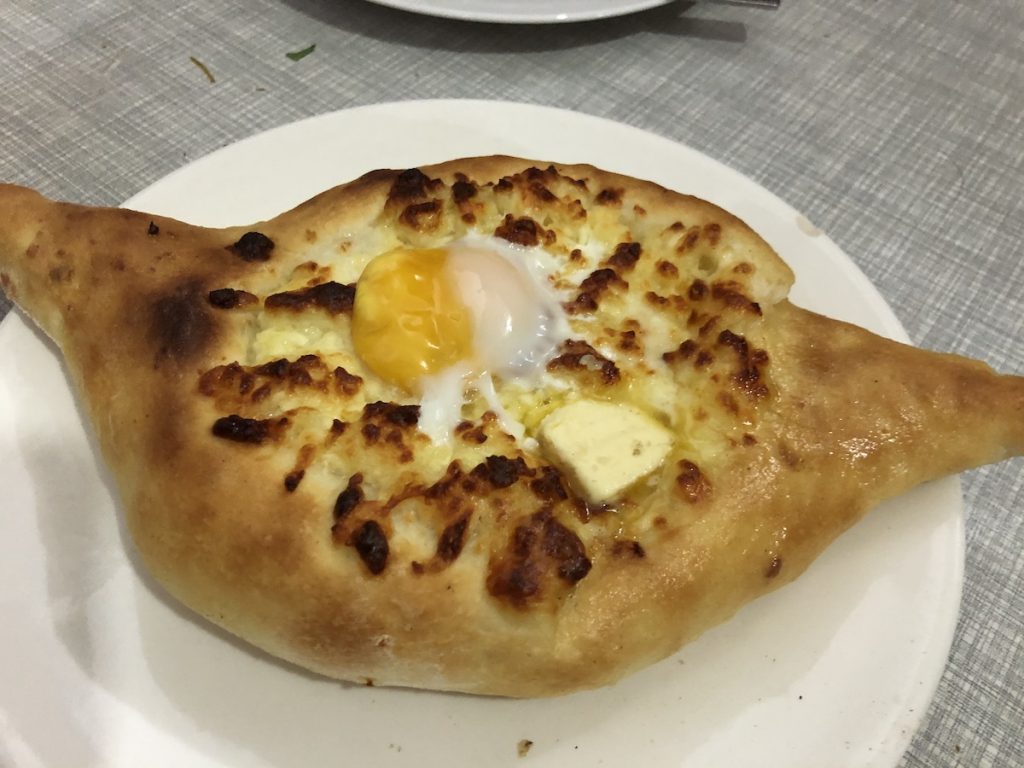
Yes, I thought about how many calories it contained while breaking off hot bits of bread to swirl in the butter and cheese.
But I didn’t think about it very much.
Photos © Tomoko Goto 2023
